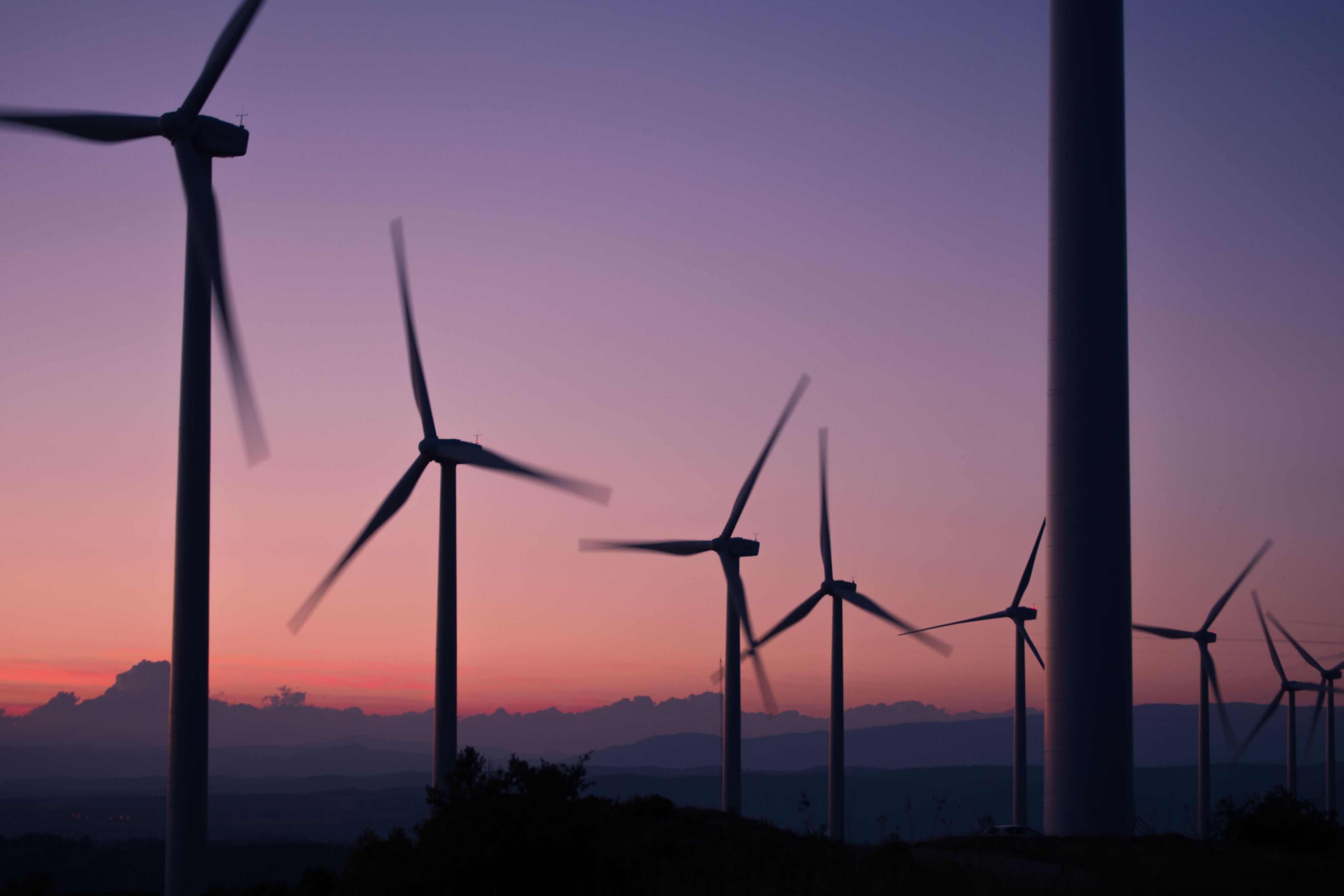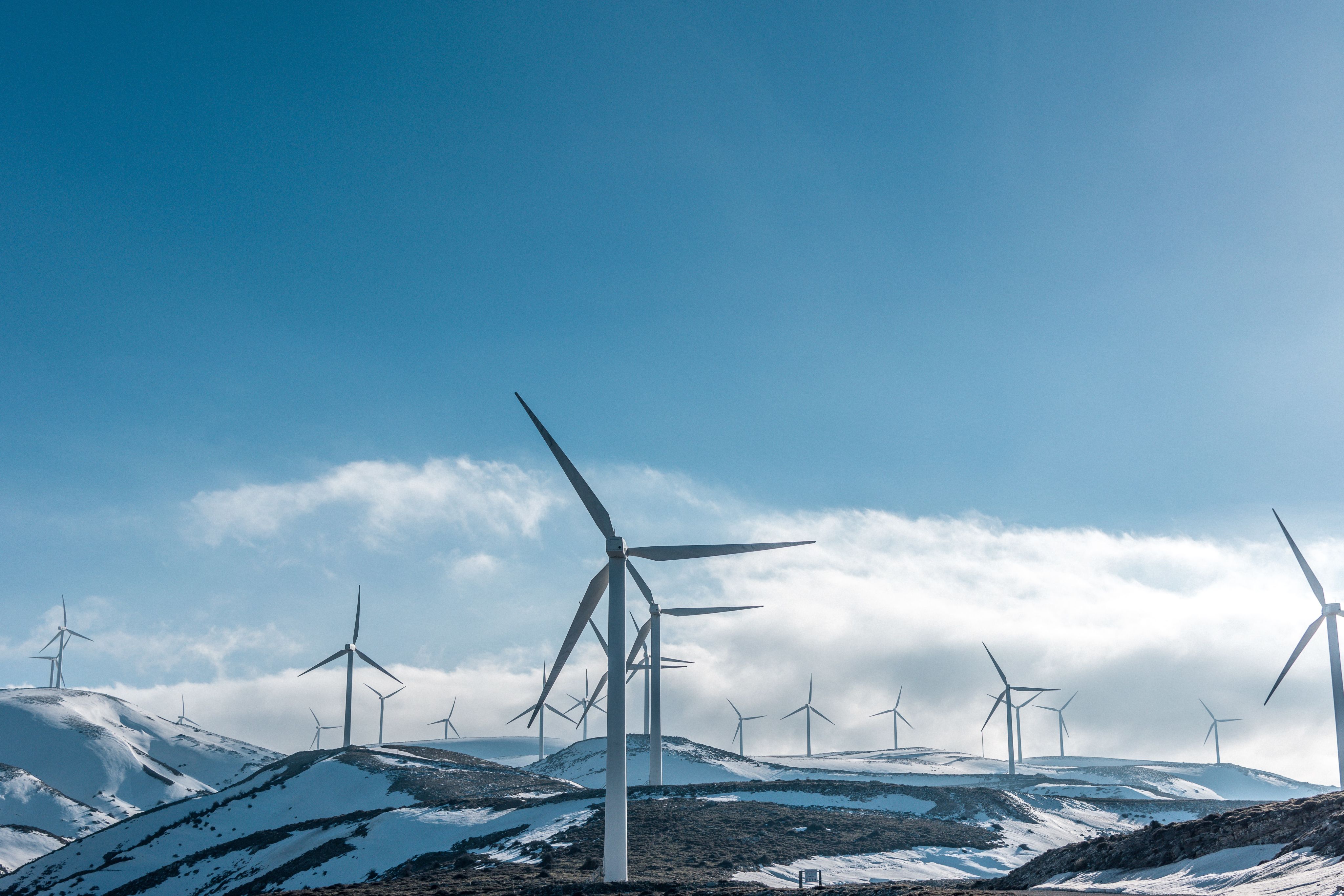Humans
in the shadow of
Renewables

“I've never seen work. You're born into a generation of poverty...The whole country and all half the world got electricity because of my grandparents, great grandparents, uncle, my cousins, (But) we really, we really got brick rooms,” said a young girl from West Virginia, describing the development trajectory of her hometown.
Since the 19th century, West Virginia has been a resource-dependent region, driven by coal mining. The rise of industrialization transformed mining areas into densely populated communities, with coal becoming a significant revenue source for the state government.
However, when coal demand began to decline in the late 20th century, the local economy stagnated due to a lack of diversification.
Today, as West Virginia continues to rely heavily on the coal industry, it is not reaping the benefits of the clean energy transition (Bowen & Christiadi, 2017). Poverty, unemployment, and fiscal crises have ensued...
I. The Uneven Landscape
of the Energy Transition

For much of the past century, coal was a dominant fuel in U.S. electricity production, providing nearly half of the nation's power in 2008. However, production has been in steady decline, dropping by 24% by 2015, with coal's share reduced to about 30% by 2016 (Morris, 2016). This can be attributed to 2 primary factors: (a) The rise of low-cost natural gas and renewable energy: Advances in horizontal drilling and hydraulic fracturing boosted natural gas supply and drove prices down. (b) Environmental regulations: As climate change became a critical issue, states across the U.S. began setting ambitious goals to reduce reliance on carbon-intensive fuels like coal. Under the Clean Power Plan, the U.S. Energy Information Administration predicted a 20% to 32% reduction in coal production by 2025 (Morris, 2016).
However, the benefits of this transition have not been evenly shared.
West Virginia stands out as a case study of a community left behind in the new energy economy.
1. West Virginia's coal industry has faced a severe and prolonged decline.
Between 2001 and 2016, the state's coal production fell by half, from approximately 162 million short tons to 80 million short tons, with the southern coalfields experiencing a staggering 70% reduction. Although the broader U.S. coal production also declined from 1.2 billion to 728 million short tons during the same period (a 35% decrease), the impact in West Virginia was disproportionately severe (Morris, 2016). The drop in demand for coal-fired electricity further accelerated the closure of coal power plants. By 2016, the capacity utilization of coal plants in the state had dropped from 68% in 2008 to 48%, leading to the retirement of around 37 GW of coal-fired capacity between 2012 and 2015—roughly 14% of the state's overall power generation capacity (Bowen & Christiadi, 2017).
2. The rapid contraction of the coal industry has had devastating effects on the workforce.
Coal employment had already been in decline before the overall production slowdown, but between 2011 and 2016, the industry shed approximately 13,000 jobs, representing a 52% reduction in coal-related employment, with the majority of these losses occurring in southern West Virginia (CGEP, 2023). The local impacts were even more pronounced: Boone County alone lost 3,300 mining jobs, accounting for 80% of the county's mining workforce. Mingo and Logan counties each saw a reduction of over 900 jobs, while Fayette, Wayne, Monongalia, and McDowell counties experienced job losses are more than half of their mining workforce. A critical challenge remains: job growth in sectors like natural gas, solar, and wind typically does not occur in the same regions where coal employment has drastically declined (Haerer & Pratson, 2015) . This misalignment between the beneficiaries of the energy transition and those most negatively impacted by it creates a significant socio-economic divide.
3. The coal sector collapse has led to a fiscal crisis, severely impacting public services.
For instance, Mingo County lost nearly $8 million in property tax revenue following coal company bankruptcies in 2015, resulting in the closure of 3 elementary schools (CGEP, 2023). The erosion of tax revenue, wages, and property values, coupled with the decline in associated commercial activities, has dealt a severe blow to local economies, public schools, and healthcare systems. The decline in tax revenue has reduced the state's ability to fund essential services, further exacerbating economic and social disparities.
4. Now, West Virginia's economy remains fragile.
In 2023, it ranked 42nd in size among U.S. states (USAFacts, n.d.). Since 2015, the state's GDP growth has consistently lagged behind the national average, and without the gains from the natural gas sector, many regions of the state would be in far worse economic shape. Income inequality between counties has also widened, making economic recovery even more difficult.
II. Forgotten or Included?

1. The Price of being forgotten: Systemic Challenges across the US
As the United States accelerates its transition from fossil fuels to renewable energy, the social and economic costs of this shift are becoming increasingly apparent—especially for workers and communities historically dependent on coal. Over the past decade, the U.S. coal industry has experienced a dramatic contraction: from 2019 to 2020, the number of coal jobs in the US decreased by more than 8,000, and the employment scale contracted by approximately 15% (UNEER, 2021). This trend is not unique to any single state; rather, it is a widespread phenomenon affecting coal regions from Appalachia to the Powder River Basin in Wyoming.
The consequences of this decline are multi-dimensional. First, mass layoffs have left tens of thousands of workers without stable employment, and the average age of remaining coal workers continues to rise, with fewer young people willing to enter the sector. Skills mismatches and limited retraining opportunities mean many displaced miners struggle to find new, comparable jobs, often ending up in lower-wage, less secure positions or leaving the workforce entirely. Second, the health impacts are significant: coal mining remains a hazardous occupation, with workers facing higher rates of occupational diseases such as black lung, as well as increased risks of cancer and respiratory illnesses.
Economically, the collapse of coal has triggered fiscal crises in many counties. Local governments that once relied heavily on coal-related tax revenues have been forced to cut public services, close schools, and delay infrastructure projects. In Kentucky’s Floyd County, for example, the closure of major mines led to the loss of health insurance for many families and a sharp reduction in public budgets. In Wyoming’s Powder River Basin, the downturn in coal has pushed rural hospitals and clinics to the brink of closure as populations shrink and funding dries up.
These challenges are compounded by the broader uncertainties of the U.S. energy transition. While renewable energy jobs are growing rapidly—solar and wind accounted for nearly 90% of new power capacity in 2024—these opportunities are often geographically and technically disconnected from the communities most affected by coal’s decline. As a result, the benefits of the clean energy boom have not reached many of those who bear the greatest costs of transition.
2. Rebuilding Hope: Putting People at the Center of the Energy Equation
Despite these challenges, there are emerging examples of successful, people-centered transition efforts.
Policy Intervention
Federal intervention is beginning to address environmental justice. In 2023, the Biden administration awarded $800,000 to West Virginia University for environmental justice projects (EPA, 2023). Internationally, Germany’s Coal Commission Act funds lifelong education for former coal workers, helping to stabilize unemployment during the transition (Heilmann & Popp, 2020).
Grassroots Innovation
Local organizations are also making a difference. Coalfield Development Corporation has repurposed abandoned mines into modern agricultural hubs, achieving an 89% employee retention rate. Solar Holler has trained over 300 former miners as solar technicians, increasing their hourly wages by 35%. These models demonstrate that with the right support, workers can successfully transition to new industries (Carley et al., 2021).
III. Pathways to a Just Future

Germany’s Coal Commission Act demonstrates how legislative safeguards for transition funds can mitigate regional shocks. The act mandates shared federal-state funding for worker retraining and establishes regional oversight bodies to coordinate transition efforts (Heilmann & Popp, 2020). Similarly, the UK’s Transition Training Credit System certifies 647 transferable skills, reducing average reemployment cycles to 11 months (Carley et al., 2021). In the US, Texas’ wind energy projects further validate blended financing tools (green bonds + community trust funds), where public-private partnerships reduced project costs by 18% (PNNL Report, 2023). These institutional models provide replicable blueprints for U.S. policymakers.
Toward Resilient Transition
Transition is not a zero-sum game but a necessary evolution toward sustainable progress. As we shape the energy future, remember:
Every policy decision can redefine a community’s trajectory.
Every green investment can embed equity clauses.
Every energy choice can support ethical supply chains.
Truly sustainable transitions leave no one behind.
Photo by Justin Lim on Unsplash
Photo by Justin Lim on Unsplash
Want to do more?
You can make a difference by:
- Learning more about organizations like the Just Transition Alliance and their efforts to advocate for policy changes.
- Donating to funds that help coal communities adapt to the new energy landscape.
- Signing a petition to support legislation that ensures coal workers have access to retraining programs.
- Keeping track of just transition in daily life...
References
Apostolopoulos, N., Kakouris, A., Liargovas, P., Borisov, P., Radev, T., Apostolopoulos, S., Daskou, S., & Anastasopoulou, E. Ε. (2023). Just transition policies, power plant workers and green entrepreneurs in Greece, Cyprus and Bulgaria: can education and retraining meet the challenge? Sustainability, 15(23), 16307. https:// doi.org /10.3390/ su152316 307
Arora, A., & Schroeder, H. (2022). How to avoid unjust energy transitions: insights from the Ruhr region. Energy Sustainability and Society, 12(1). https://doi.org/10.1186/s13705-022-00345-5
Bowen, E., & Christiadi. (2017). Fossil fuel opportunities for West Virginia: 2017 Update. Bureau of Business & Economic Research, West Virginia University. https://www.energywv.org/assets/files/EnergyPlan/ Fossil -Fuel-Opportunities -for-West-Virginia-2017-Update.pdf
Carley, S., Engle, C., & Konisky, D. M. (2021). An analysis of energy justice programs across the United States. Energy Policy, 152, 112219. https://doi.org/10.1016/j.enpol.2021.112219
Carley, S., Evans, T. P., Graff, M., & Konisky, D. M. (2021). Just transitions and energy justice: Policy approaches to energy transitions. Energy Policy, 151, 112345. https://doi.org/10.1016/j.enpol.2021.112345
California Energy Commission. (2023). Just transition program. https://www.energy.ca.gov/programs-and-topics/programs/just-transition
Columbia University Center on Global Energy Policy (CGEP). (2023). The Risk of fiscal collapse in coal-reliant communities. https://www.energypolicy.columbia.edu/publications/risk-fiscal-collapse-coal-reliant-communities/
EFI&NASECO. The U.S. Energy & Employment Report (2020). https://static1.squarespace.com/static/5a98cf80ec4eb7c5cd928c61/t/5ee78423c6fcc20e01b83896/1592230956175/USEER+2020+0615.pdf
EPA. (2023). Biden-Harris Administration selects West Virginia University to receive $800,000 pollution prevention grant to advance environmental justice. United States Environmental Protection Agency. https://www.epa.gov/newsreleases/biden-harris-administration-selects-west-virginia-university-receive-800000-pollution
Harris, D. M., & McCarthy, J. (2023). A just transition to what, for whom, and by what means? Transition technology, carbon markets, and an Appalachian coal mine. Energy Research & Social Science, 106, 103307. https://doi.org/10.1016/j.erss.2023.103307
Harrison, K. (2013), "The Political Economy of British Columbia's Carbon Tax", OECD Environment Working Papers, No. 63, OECD Publishing, Paris, https://doi.org/10.1787/5k3z04gkkhkg-en.
HEILMANN, F., & POPP, R. (2020). HOW (NOT) TO PHASE-OUT COAL: LESSONS FROM GERMANY FOR JUST AND TIMELY COAL EXITS. E3G. http://www.jstor.org/stable/resrep28821
Morris, A. (2016). Build a better future for coal workers and their communities. Brookings Institution. https://www.brookings.edu/wp-content/uploads/2016/04/build-a-better-future-for-coal-workers-and-their-communities-morris-updated-071216.pdf
PNNL. (2023). Blended financing in renewable energy: Experiences and opportunities (PNNL-31909). Pacific Northwest National Laboratory. https://www.pnnl.gov/main/publications/external/technical_reports/PNNL-31909.pdf
USAFacts. (n.d.). West Virginia economy. https://usafacts.org/topics/economy/state/west-virginia/
United States Department of Energy. (2021). United States Energy & Employment Report (USEER). https://www.energy.gov/sites/default/files/2021-07/USEER%202021%20Main%20Body.pdf
UK Skills Partnership. (n.d.). DITTVET Brochure. https://ukskillspartnership.org.uk/moogryce/info/dittvetbrochure.pdf
West Virginia Legislature. (n.d.). Code of West Virginia. https://code.wvlegislature.gov/5B-2F-2/
WV Office of Energy. (2013). Energy Plan: 2013-2017. https://www.energywv.org/assets/files/EnergyPlan/ENERGY_ 5year_Plan_ALL-2013-2017.pdf


